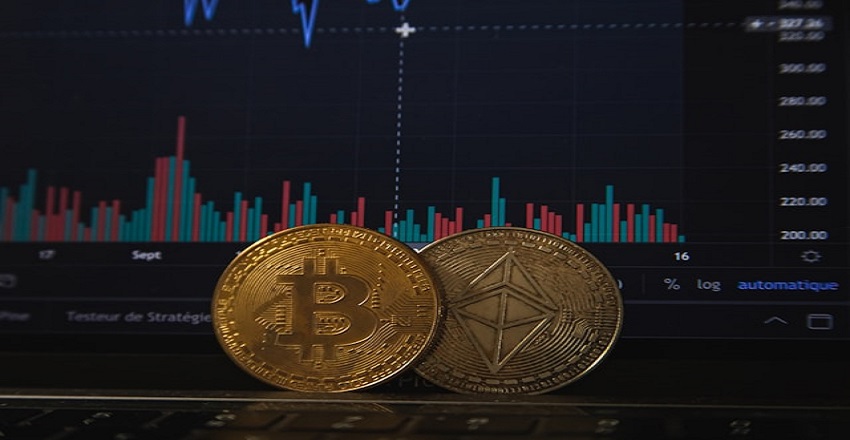
The Ultimate Guide to Understanding Cryptocurrency Basics
Cryptocurrency has become one of the most fascinating financial innovations of the 21st century. For newcomers, however, the world of digital coins, blockchain, mining, and wallets can feel overwhelming. The jargon is technical, the market is volatile, and the headlines often swing between stories of people becoming millionaires overnight and those losing their entire savings. This is why having a solid foundation in cryptocurrency basics is crucial before investing or using digital currencies. In this ultimate guide, we’ll break down everything you need to know to start your journey confidently in the crypto world.
The first thing to understand is what cryptocurrency is. At its core, cryptocurrency is a form of digital money that uses cryptography to secure transactions. Unlike traditional currencies such as the dollar or euro, cryptocurrencies are decentralized, meaning no single government or bank controls them. Instead, they operate on a network of computers connected through a technology called blockchain. This decentralization is one of the reasons why crypto is so revolutionary—it empowers individuals to have direct control over their money.
The backbone of cryptocurrency is the blockchain. Imagine blockchain as a digital ledger, like a notebook, where every transaction ever made with a cryptocurrency is recorded. Each page of this notebook is called a “block,” and every new transaction is added as a new block linked to the previous one, forming a chain. This makes the blockchain nearly impossible to alter or hack, because changing one block would require changing the entire chain across thousands of computers worldwide. This transparency and security are what make blockchain so powerful.
The most well-known cryptocurrency is Bitcoin, which was introduced in 2009 by an anonymous figure or group known as Satoshi Nakamoto. Bitcoin was created as a decentralized alternative to traditional money, allowing people to send and receive payments without needing banks. Over time, other cryptocurrencies like Ethereum, Ripple, Litecoin, and thousands more have been developed, each with unique features and purposes. For example, Ethereum introduced “smart contracts,” which are self-executing agreements coded directly onto the blockchain.
To use cryptocurrency, you need a wallet. A wallet is a digital tool that stores your crypto securely. There are different types of wallets: hot wallets and cold wallets. Hot wallets are online and connected to the internet, making them convenient for frequent transactions but vulnerable to hacking. Cold wallets, such as hardware wallets, are offline devices that provide maximum security for long-term storage. Choosing the right wallet depends on how often you plan to use your cryptocurrency.
Once you have a wallet, you’ll need a way to buy cryptocurrency. This is where crypto exchanges come in. Exchanges like Binance, Coinbase, and Kraken allow you to buy, sell, and trade cryptocurrencies using traditional money or other digital assets. Some exchanges are centralized, meaning they act like traditional brokers and manage transactions for you, while others are decentralized, allowing peer-to-peer trades without intermediaries. Beginners usually start with centralized exchanges for simplicity.
One of the most exciting aspects of cryptocurrency is its use cases. While many people think of crypto only as an investment, its applications go far beyond that. For example, cryptocurrencies are being used for cross-border payments, eliminating the high fees and delays often associated with traditional banking. They’re also being used in decentralized finance (DeFi), where users can borrow, lend, and earn interest without needing banks. Even industries like art and entertainment are embracing crypto through NFTs (non-fungible tokens), which represent ownership of digital assets like artwork and music.
However, it’s important to understand the risks associated with cryptocurrency. The market is notoriously volatile, with prices capable of swinging dramatically in hours or even minutes. This volatility can lead to big profits but also significant losses. Moreover, the lack of regulation in some areas has given rise to scams, frauds, and fake projects. That’s why thorough research and cautious investing are essential in the crypto space.
Another concept you’ll often hear in the crypto world is mining. Mining is the process by which transactions are verified and added to the blockchain. In proof-of-work systems like Bitcoin, miners use powerful computers to solve complex mathematical puzzles, and in return, they are rewarded with newly created coins. However, this process requires enormous energy, leading to environmental concerns. To address this, some cryptocurrencies like Ethereum have shifted to proof-of-stake systems, which are more energy-efficient.
If you’re considering investing in cryptocurrency, it’s wise to start small and diversify your investments. Don’t put all your money into one coin. Instead, spread it across established options like Bitcoin and Ethereum and promising altcoins. At the same time, learn about stablecoins, which are cryptocurrencies pegged to stable assets like the US dollar. These coins reduce volatility and can serve as safe havens during market crashes.
The future of cryptocurrency is both exciting and uncertain. Some experts believe crypto will become as common as credit cards, while others remain skeptical about its long-term stability. What’s clear, however, is that cryptocurrencies are here to stay. They are reshaping finance, technology, and even culture in profound ways. By understanding the basics—blockchain, wallets, exchanges, risks, and opportunities—you’ll be better prepared to navigate this digital frontier.
In conclusion, cryptocurrency is more than just a buzzword; it’s a transformative innovation with the potential to redefine money as we know it. While the market can be intimidating at first, gaining knowledge and taking a cautious, informed approach can open up incredible opportunities. Whether you want to invest, use crypto for payments, or simply understand how it works, the key is to start with the basics and build your knowledge step by step.
